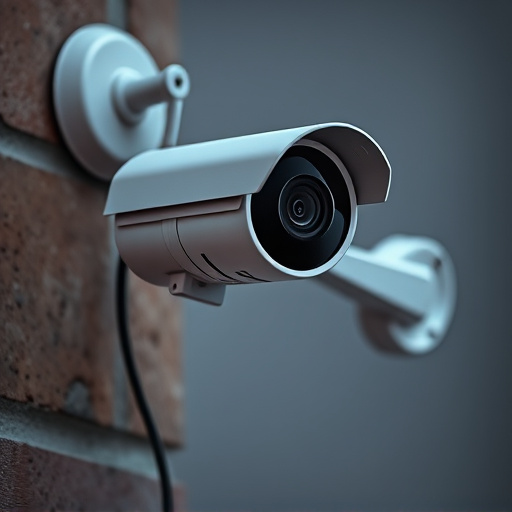Strategically placed outdoor fake security cameras at 5-10 feet (1.5-3 meters) above ground level offer an affordable, psychological deterrent for enhancing home and business security without video recording. Ideal positioning includes eye-level or slightly elevated mounting on structures like trees, rooftops, or poles, considering field of view, obstructions, and area size to maximize coverage while respecting privacy laws and ethical considerations.
“Uncover the power of outdoor fake security camera installations, a smart solution for enhancing home security without breaking the bank. This comprehensive guide explores the benefits of these realistic replicas and their potential to deter crime. From selecting the ideal placement, considering legal aspects, to installation tips for maximum impact, we cover all you need to know. Learn how to position your fake cameras at optimal heights for enhanced visibility, ensuring a robust security network while staying within ethical boundaries.”
- Understanding Fake Security Cameras and Their Benefits
- Choosing the Right Outdoor Camera Placement: Factors to Consider
- Installation Tips for Optimal Visibility and Effectiveness
- Legal and Ethical Considerations for Fake Camera Setup
Understanding Fake Security Cameras and Their Benefits
Understanding Fake Security Cameras and Their Benefits
Fake security cameras, also known as decoy or dummy cameras, are an innovative solution for enhancing home and business security without breaking the bank. These realistic-looking devices mimic the appearance of genuine surveillance equipment, but serve as a psychological deterrent to potential intruders. By strategically placing outdoor fake camera installations at optimal heights—typically around 5 to 10 feet above ground level—property owners can create the illusion of enhanced monitoring, thereby discouraging unwanted visitors.
One of the key benefits of fake security cameras is their cost-effectiveness compared to real surveillance systems. They offer a more affordable option for individuals and businesses looking to strengthen their security measures without significant investment. Additionally, these decoy cameras provide peace of mind, as they can effectively deter crimes like burglary or vandalism simply by being present, even if they do not record video footage.
Choosing the Right Outdoor Camera Placement: Factors to Consider
When planning an outdoor fake security camera installation, choosing the right height is crucial. The optimal placement for these decoys is often at a vantage point where they can offer a clear view of the area you wish to monitor. Generally, this means mounting them at eye level or slightly elevated, mimicking real surveillance equipment. Consider trees, rooftops, or even strategically placed poles as ideal locations.
Various factors influence this decision, such as the camera’s field of view, nearby obstructions like bushes or signs, and the size of the area to be monitored. The height should ensure an unobstructed line of sight while aligning with legal considerations regarding privacy and visibility. Proper placement not only enhances the deterrent effect but also ensures effective coverage for your security system.
Installation Tips for Optimal Visibility and Effectiveness
When setting up an outdoor fake security camera, positioning is key for both optimal visibility and effectiveness. Mounting the device at a strategic height ensures it can capture clear footage of your property while deterring potential intruders. Ideally, place the camera 5-7 feet (1.5-2.1 meters) above ground level, offering a wide field of view that covers essential areas like entrances, exits, and common hiding spots. Consider using tripods or wall mounts designed for outdoor use to achieve this elevation, ensuring stability against wind or weather conditions.
For maximum impact, position the camera where it can see clearly but remain hidden. Avoid placing it too close to windows or other locations that might reveal its fake nature, as the goal is to mimic a genuine security system. Natural surroundings like trees or foliage can provide cover while still allowing for clear sightlines. Regularly adjust the camera’s angle and lens settings to fine-tune its view, ensuring it captures high-quality footage day and night.
Legal and Ethical Considerations for Fake Camera Setup
Setting up fake security monitoring devices, especially outdoors, requires careful consideration of legal and ethical boundaries. One crucial aspect is ensuring that the placement of these simulated cameras adheres to local laws regarding privacy and surveillance. The outdoor fake camera installation height should be strategic; it must not obstruct private spaces or areas where individuals expect privacy, such as backyards or windows.
Additionally, users must respect the rights of others and avoid using these devices for invasive monitoring or in locations that could cause distress or alarm. Ethical guidelines suggest that while fake cameras can deter crime, their presence should be transparent to prevent any perception of constant surveillance, which might negatively impact community relations and individual freedoms.
In conclusion, fake security monitoring devices offer a cost-effective and discreet way to enhance home or business security. By strategically placing outdoor cameras at optimal heights, as discussed in this article, you can achieve maximum visibility and deter potential criminals. However, it’s crucial to navigate legal and ethical considerations while ensuring responsible use for effective results.
